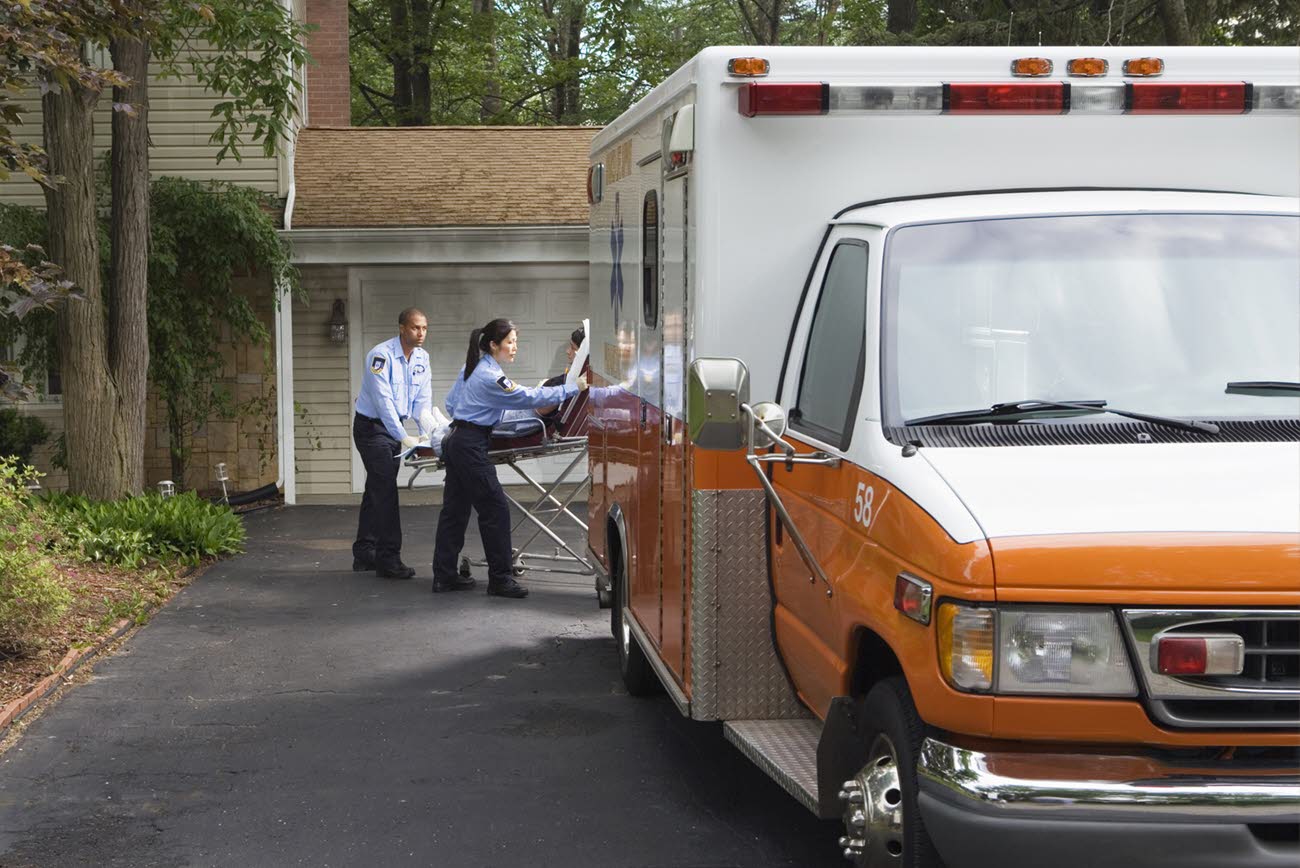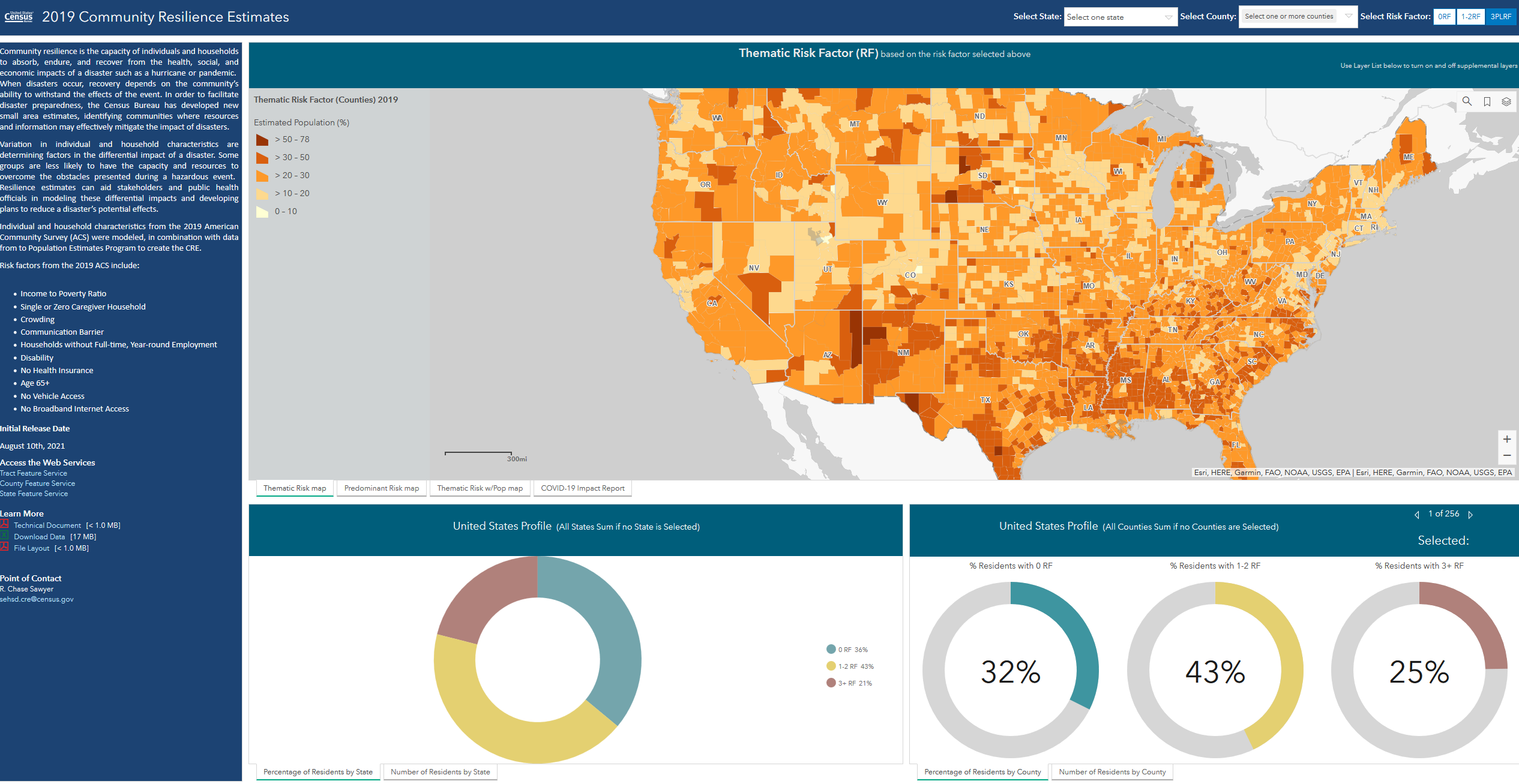New Census Bureau Tool Will Now Consistently Update Communities on Their Vulnerable Populations
The U.S. Census Bureau’s Community Resilience Estimates (CRE) is experimental no more. It will now be a regularly updated data product that measures communities’ ability to cope with disasters and other emergencies.
Released last year as an experimental data product, the CRE garnered so much interest among public and government agencies that the Census Bureau decided to offer it regularly — with tweaks based on user feedback — to help decision-makers plan how to best serve their community.
The need for these estimates came to the forefront last year as the Census Bureau was inundated with data requests by government agencies that needed to make data-driven decisions in response to the COVID-19 pandemic.
The changes will better measure a community’s ability to withstand various disasters and emergencies.
What’s New?
This version of the CRE:
- Uses the latest data available (2019 American Community Survey, 2019 Population Estimates).
- Includes updates designed to expand its use in different disaster scenarios, such as added data on internet access, availability of vehicles and updated criteria for crowding and employment characteristics.
- Going forward, we are planning annual updates.
These revisions are aimed at ensuring the CRE captures vulnerability in the most timely, accurate and applicable way.
Why Is CRE Important?
The need for these estimates came to the forefront last year as the Census Bureau was inundated with data requests by government agencies that needed to make data-driven decisions in response to the COVID-19 pandemic.
The Census Bureau swiftly created the Census COVID-19 Data Hub in response. But data users wanted more: a metric that could indicate — in simple terms — which communities were most vulnerable to fallout from the pandemic.
So the Census Bureau created the Community Resilience Estimates as part of a series of new experimental data products.
Experimental Data Product Series
The Census Bureau’s Experimental Data Products are new and innovative statistical products created using novel data sources or methodologies.
This series allows the Census Bureau to gather feedback from data users and stakeholders on the quality and usefulness of the new products. Among other experimental products launched: the Pulse Survey designed to quickly and efficiently gauge the impact of the pandemic on people’s lives.
Because the CRE have been determined to meet Census Bureau Quality Standards and there is great demand for the estimates, they are being moved out of the experimental designation.
How CRE Works
How vulnerable is your neighborhood to the impact of disasters?
The CRE measures a community’s risks in a new way. While other measures use publicly available data, the CRE uses respondent data to provide a more accurate assessment of vulnerability. It builds upon the work of the Centers for Disease Control and Prevention in the field of social vulnerability.
This new approach allows the Census Bureau to create estimates by first reviewing respondent data for risk factors. It then applies small area modeling techniques to craft timelier and more accurate data.
These techniques allow us to publish data down to the census tract level using one year’s worth of data collected — a first for any Census Bureau data product other than the decennial census.
Once the Census Bureau finishes applying state-of-the-art statistical methods, it releases estimates on the number and percentage of people who can be considered high, medium or low risk.
This allows us to provide an estimate of the number of people who may be socially vulnerable at the neighborhood level. It is a first for these types of indices which typically create and compare county level scores.
The CRE will continue to be improved and updated as a regularly occurring Census Bureau data product.
Related Statistics
-
Stats for StoriesNational Preparedness Month: September 2025Find resources on wildfires, air quality, hurricanes, extreme heat, tornadoes, floods, pandemics and more at census.gov/disasters.
-
Program Survey Landing PageCommunity Resilience EstimatesThe Census Bureau’s CRE provide an easily understood metric for how socially vulnerable every neighborhood in the United States is to the impacts of disasters.
Subscribe
Our email newsletter is sent out on the day we publish a story. Get an alert directly in your inbox to read, share and blog about our newest stories.
Contact our Public Information Office for media inquiries or interviews.
-
America Counts StoryHow Resilient Are Communities to Disasters?June 29, 2020New Community Resilience Estimates indicates more than a quarter of the U.S. population may be at high risk of experiencing the negative impacts of COVID-19.
-
America Counts StoryHow Census Data Help the Nation Respond to DisastersApril 09, 2020In a Community Risk Reduction Radio podcast, the Census Emergency Preparedness and Response Team shows how Census data help when any disaster strikes.
-
America Counts StoryThe Challenge of Mapping Disaster Areas During a National EmergencyJanuary 11, 2021All 50 states were declared federal disaster areas due to COVID-19, leading to a redesign of the Census Bureau’s OnTheMap for Emergency Management data tool.
-
EmploymentThe Stories Behind Census Numbers in 2025December 22, 2025A year-end review of America Counts stories on everything from families and housing to business and income.
-
Families and Living ArrangementsMore First-Time Moms Live With an Unmarried PartnerDecember 16, 2025About a quarter of all first-time mothers were cohabiting at the time of childbirth in the early 2020s. College-educated moms were more likely to be married.
-
Business and EconomyState Governments Parlay Sports Betting Into Tax WindfallDecember 10, 2025Total state-level sports betting tax revenues has increased 382% since the third quarter of 2021, when data collection began.
-
EmploymentU.S. Workforce is Aging, Especially in Some FirmsDecember 02, 2025Firms in sectors like utilities and manufacturing and states like Maine are more likely to have a high share of workers over age 55.





